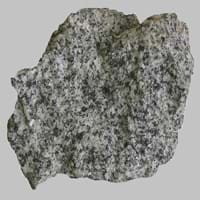Lignite and Diorite
Definition
Definition
Lignite is a soft brownish coal which shows traces of plants and is intermediate between bituminous coal and peat
Diorite is a grey to dark-grey intermediate intrusive igneous rock composed principally of plagioclase feldspar,biotite, hornblende, and pyroxene
History
Origin
France
Unknown
Discoverer
Unknown
Unknown
Etymology
From French, Latin lignum wood + -ite1
From early 19th century coined in French, formed irregularly from Greek diorizein distinguish
Class
Sedimentary Rocks
Igneous Rocks
Sub-Class
Durable Rock, Soft Rock
Durable Rock, Hard Rock
Family
Group
Not Applicable
Plutonic
Other Categories
Coarse Grained Rock, Fine Grained Rock, Medium Grained Rock, Opaque Rock
Coarse Grained Rock, Medium Grained Rock, Opaque Rock
Texture
Texture
Amorphous, Glassy
Phaneritic
Color
Black, Brown, Dark Brown, Grey, Light to Dark Grey
Black, Brown, Light to Dark Grey, White
Maintenance
Less
Less
Durability
Durable
Durable
Water Resistant
No
No
Scratch Resistant
No
No
Stain Resistant
No
No
Wind Resistant
No
Yes
Acid Resistant
No
No
Appearance
Veined or Pebbled
Shiny
Uses
Architecture
Interior Uses
Not Yet Used
Decorative Aggregates, Interior Decoration
Exterior Uses
Not Yet Used
As Building Stone, As Facing Stone, Garden Decoration
Other Architectural Uses
Not Yet Used
Curbing
Industry
Construction Industry
for Road Aggregate, Steel Production
As Dimension Stone, Cement Manufacture, Cobblestones, Construction Aggregate, for Road Aggregate
Medical Industry
Not Yet Used
Not Yet Used
Antiquity Uses
Not Yet Used
Artifacts, Monuments, Sculpture, Small Figurines
Other Uses
Commercial Uses
Electricity Generation
Creating Artwork, Curling
Types
Types
Xyloid Lignite or Fossil Wood and Compact Lignite or Perfect Lignite
Not Available
Features
Generally rough to touch, Helps in production of Heat and Electricity, Used as fossil fuel
Typically speckled black and white.
Archaeological Significance
Monuments
Not Yet Used
Used
Famous Monuments
Not Applicable
Data Not Available
Sculpture
Not Yet Used
Used
Famous Sculptures
Not Applicable
Data Not Available
Pictographs
Used
Not Used
Petroglyphs
Used
Not Used
Figurines
Not Yet Used
Used
Fossils
Present
Absent
Formation
Formation
Coal formation takes place due to accumulation of plant debris in a swamp environment. The Coal formation process continues, as peat turns into lignite brown or black coal at increasing heat and pressure.
Diorite is a coarse-grained intrusive igneous rock which contains large interlocking and randomly oriented crystals and forms when molten lava does not reach the Earth’s surface and cools down in the Earth’s crust.
Composition
Mineral Content
Not Available
Albite, Amphibole, Apatite, Biotite, Feldspar, Hornblade, Ilmenite, Magnetite, Muscovite or Illite, Olivine, Plagioclase, Pyroxene, Quartz, Sulfides, Titanite, Zircon
Compound Content
Carbon, Hydrogen, Nitrogen, Oxygen, Sulphur
Silicon Dioxide
Transformation
Metamorphism
No
Yes
Types of Metamorphism
Not Applicable
Cataclastic Metamorphism, Contact Metamorphism, Regional Metamorphism
Weathering
Yes
Yes
Types of Weathering
Biological Weathering, Chemical Weathering, Mechanical Weathering
Biological Weathering, Chemical Weathering, Mechanical Weathering
Erosion
Yes
Yes
Types of Erosion
Chemical Erosion, Water Erosion, Wind Erosion
Chemical Erosion, Coastal Erosion, Water Erosion
Properties
Physical Properties
Hardness
1
6-7
Grain Size
Medium to Fine Coarse Grained
Medium to Coarse Grained
Fracture
Conchoidal
Not Available
Streak
Black
Bluish Black
Porosity
Highly Porous
Very Less Porous
Luster
Dull to Vitreous to Submetallic
Shiny
Compressive Strength
Not Available
225.00 N/mm2
7
Cleavage
Non-Existent
Not Available
Toughness
Not Available
2.1
Specific Gravity
1.1-1.4
2.8-3
Transparency
Opaque
Opaque
Density
800-801 g/cm3
2.8-3 g/cm3
Thermal Properties
Specific Heat Capacity
1.26 kJ/Kg K
5
Not Available
Resistance
Heat Resistant
Heat Resistant, Pressure Resistant, Wear Resistant
Reserves
Deposits in Eastern Continents
Asia
Bangladesh, Burma, Cambodia, China, India, Indonesia, Kazakhstan, Malaysia, Mongolia, Pakistan, Turkey, Vietnam
Not Yet Found
Africa
Botswana, Kenya, Morocco, Mozambique, South Africa, Tanzania
Egypt
Europe
Belgium, Bulgaria, England, France, Germany, Greece, Hungary, Kosovo, Netherlands, Norway, Poland, Romania, Serbia, Slovakia, Slovenia, The Czech Republic, Ukraine, United Kingdom
Finland, Germany, Italy, Romania, Sweden, Turkey, United Kingdom
Others
Not Yet Found
Not Yet Found
Deposits in Western Continents
North America
Canada, Mexico, USA
USA
South America
Brazil, Chile, Colombia, Venezuela
Argentina, Bolivia, Chile, Colombia, Ecuador, Peru
Deposits in Oceania Continent
Australia
New South Wales, Queensland, Victoria
New Zealand, Western Australia
All about Lignite and Diorite Properties
Know all about Lignite and Diorite properties here. All properties of rocks are important as they define the type of rock and its application. Lignite belongs to Sedimentary Rocks while Diorite belongs to Igneous Rocks.Texture of Lignite is Amorphous, Glassy whereas that of Diorite is Phaneritic. Lignite appears Veined or Pebbled and Diorite appears Shiny. The luster of Lignite is dull to vitreous to submetallic while that of Diorite is shiny. Lignite is available in black, brown, dark brown, grey, light to dark grey colors whereas Diorite is available in black, brown, light to dark grey, white colors. The commercial uses of Lignite are electricity generation and that of Diorite are creating artwork, curling.
|
||
|
||
|










